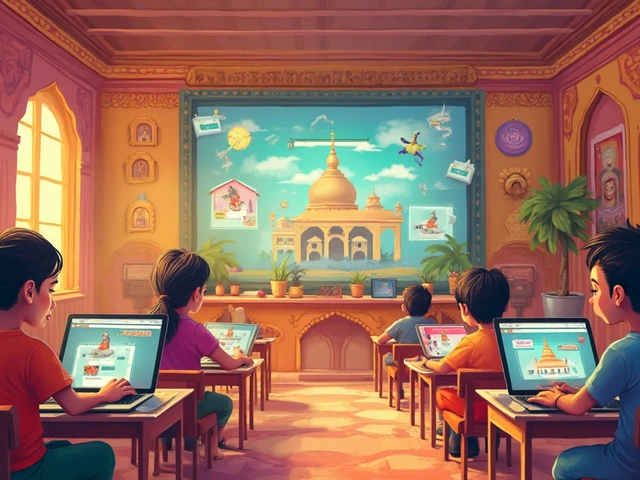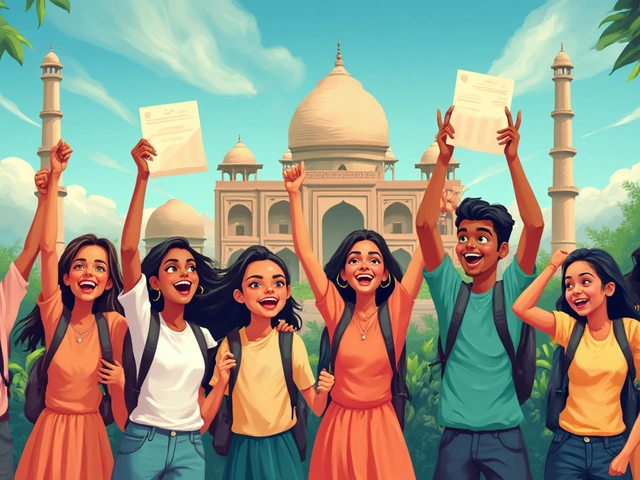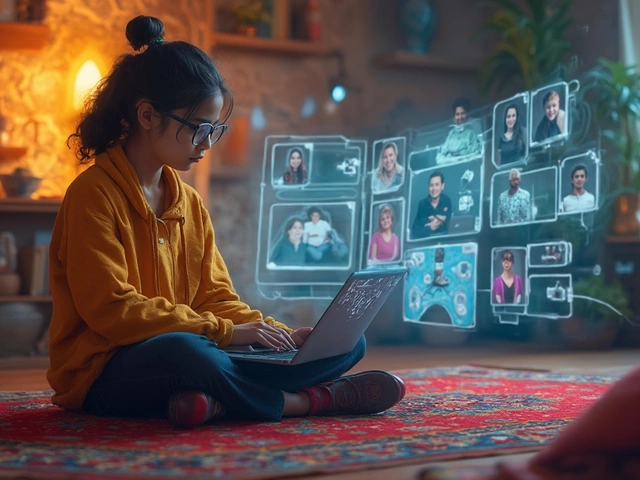Jun
9
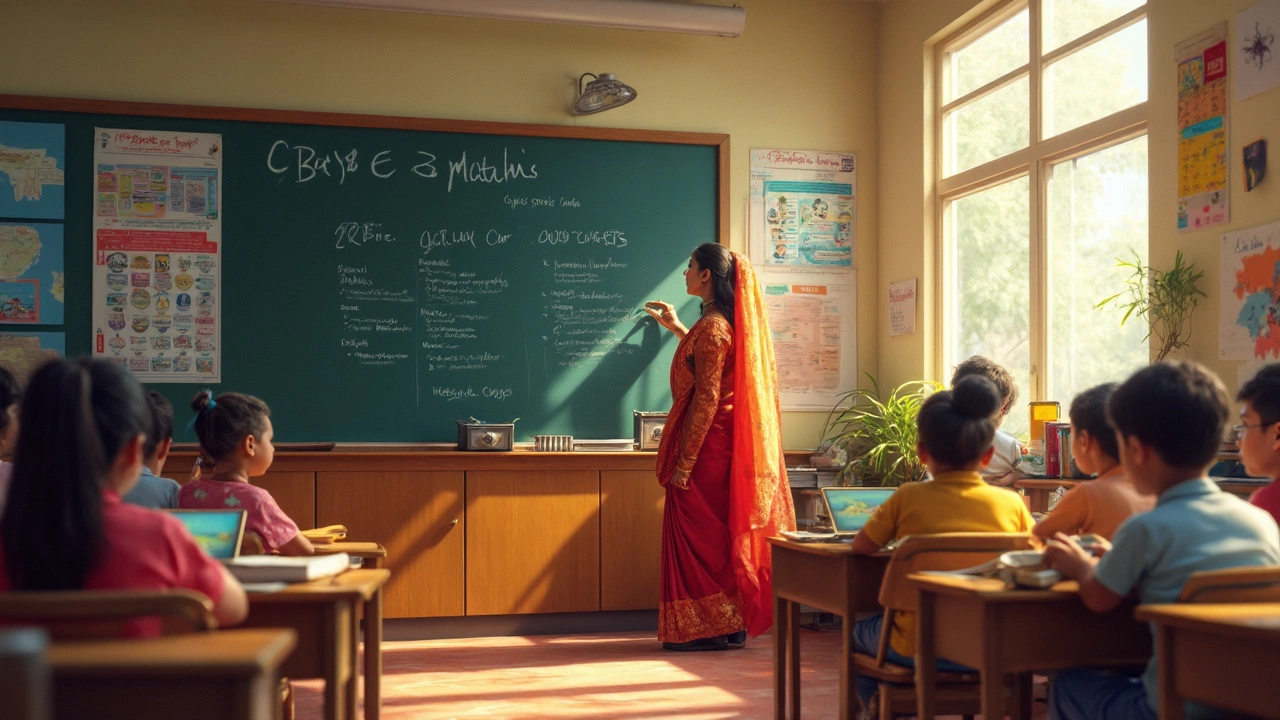
- by Dhruv Ainsley
- 0 Comments
The CBSE syllabus shapes what nearly 21,000 schools in India—and even some outside the country—actually teach. If you're a student or a parent, this syllabus is the backbone of school life, final exams, and plenty of late-night study sessions. It decides not only what goes into each textbook but even how questions come up in board exams for classes 10 and 12. So, knowing what's in the syllabus, how it's structured, and when it changes can save you from many last-minute surprises.
Unlike some other boards that can get really state-specific, the CBSE syllabus aims for a standard curriculum across India. That means whether you're studying in Delhi, Kerala, or even Dubai, the core subjects stay the same. This makes things way easier for families that move around a lot for work or business. And here's a cool fact: the syllabus doesn't just stick to rote learning—CBSE updates often push for critical thinking and problem-solving instead of just mugging up facts.
- What Makes the CBSE Syllabus Unique?
- Breaking Down Subjects and Core Areas
- How the CBSE Syllabus Changes and Why
- Tips for Students and Parents to Navigate the Syllabus
What Makes the CBSE Syllabus Unique?
The CBSE syllabus stands out mostly because it's a national-level framework. While some boards in India focus on state-specific topics or languages, CBSE aims to keep things standard no matter where your school is located. This is why it's the first choice for families that relocate often. Another point? CBSE puts a big emphasis on Science and Mathematics, which is a huge reason its students tend to do well in national entrance tests like JEE and NEET.
CBSE is recognized by major universities and professional institutes across India, so sticking to it makes sure students are ready for future studies anywhere in the country. Plus, the National Council of Educational Research and Training (NCERT) creates textbooks to match CBSE requirements, so you’re not stuck hunting for resources.
- Uniform Curriculum: The syllabus is nearly the same for all CBSE schools, which means you’re learning the same stuff whether you’re in Lucknow, Chennai, or Muscat.
- Focus on Foundational Skills: Science, Math, and English get special treatment, not just because they matter for exams, but because they build real skills for life and jobs.
- Continuous Changes: CBSE reviews and updates topics often. For example, new subjects like Artificial Intelligence and Yoga have been added in the past few years to keep up with the times.
- Less Rote Learning: The shift is toward problem-solving, hands-on activities, and real-world application instead of memorizing chapters.
- Support for Competitive Exams: Topics in CBSE line up closely with what’s covered in well-known entrance exams, so you get extra prep while doing regular schoolwork.
To give you a sense of how widespread CBSE really is, check out this quick breakdown:
| Year | No. of CBSE Schools | Countries Covered |
|---|---|---|
| 2022 | ~24,000 | 27 |
| 2023 | ~25,500 | 28 |
| 2024 | ~27,000 | 29 |
This kind of reach allows students to switch schools without losing the thread of what they’re learning. And here’s a tip: if you ever need to transfer between different regions or even countries, having a CBSE background makes things so much smoother in terms of documentation and getting accepted by new schools.
Breaking Down Subjects and Core Areas
If you’re dealing with the CBSE syllabus, you’ll notice right off that subjects are organized into clear buckets: languages, core subjects like Science and Math, and a growing set of electives. Let’s get into what every student actually studies at each level.
From Class 1 to 10, the basics are set: English, Hindi, Mathematics, Science, and Social Science. Third Language often pops up from Class 6 onward (like Sanskrit, French, or another Indian language). By the time students hit Class 9 and 10, they prep for their first big public exam—the Class 10 Board Exams. Here’s a typical subject spread for secondary school:
- Language 1 (usually English)
- Language 2 (Hindi or any approved language)
- Mathematics
- Science
- Social Science (History, Geography, Civics, Economics)
- Optional subject (like Information Technology or Drawing)
Electives get more interesting at the senior secondary level (Classes 11 and 12). Students pick a stream—Science, Commerce, or Humanities—depending on what they want to do later on. Here’s how the key streams stack up:
| Stream | Core Subjects |
|---|---|
| Science | Physics, Chemistry, Maths, Biology/Computer Science |
| Commerce | Accountancy, Business Studies, Economics, Maths/Entrepreneurship |
| Humanities | History, Political Science, Geography, Psychology, Sociology |
What’s really shifted lately is the push for more practicals, internal assessments, and projects. Science subjects now put almost 30% weight on lab work. Social Science has projects and activity-based evaluations. The idea is, life skills aren't built with just textbook learning.
One thing parents and students like about the CBSE structure: there’s space to pick up extra subjects (like Legal Studies or Mass Media) or even skill courses—cyber security, financial market management, etc. This helps tailor learning a bit closer to what a student actually wants to do after school.
It’s not just the subjects that change—how they’re taught matters, too. Math and Science, for example, now focus a lot more on solving real-world problems instead of just memorizing formulas or diagrams. If you want a curriculum that covers a lot but stays well-organized, CBSE keeps things predictable while opening doors to a bunch of choices as you go up the classes.
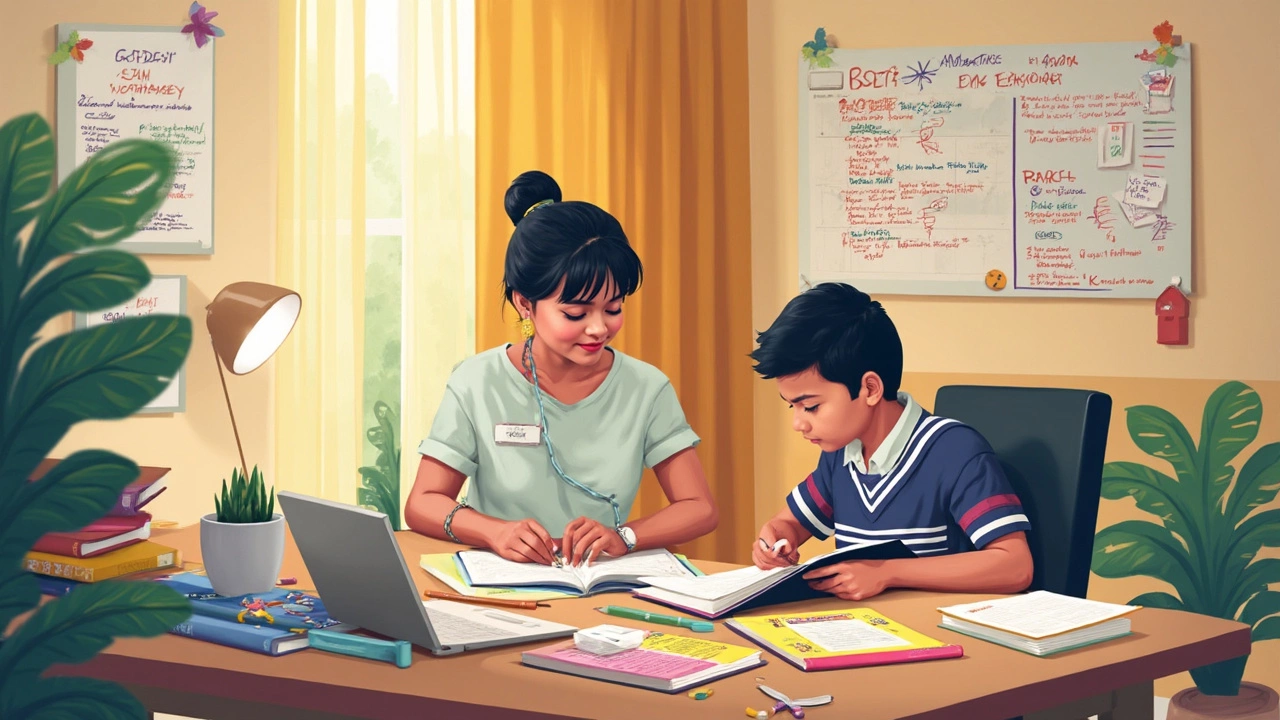
How the CBSE Syllabus Changes and Why
The CBSE syllabus isn’t just copy-pasted every year. The Central Board of Secondary Education updates it regularly, and there's real thought behind every tweak. They take feedback from teachers, education experts, and even parents. You’ll see changes to keep the content fresh, more relevant, and in line with what’s actually happening in the world right now—like adding coding or updated science topics when needed.
One main reason for syllabus changes is to avoid overload. In the pandemic years (2020–2022), for example, the CBSE trimmed a whopping 30% off some class 10 and 12 subjects so students could manage better with online classes. Another reason is aligning with new education policies. When the National Education Policy (NEP) 2020 rolled out, CBSE started to refresh its content to match the new focus on skills, less rote learning, and more practical usefulness.
Sometimes, parts get dropped or added based on real-world needs. For example, chapters on digital literacy, financial education, and current events are now seen more in Social Science and Computer Science. In Science, there have been cuts to older environmental topics and new stuff about climate change coming in their place.
| Year | Notable Change |
|---|---|
| 2020 | Reduced syllabus by 30% due to COVID-19 |
| 2021 | Started including coding in the curriculum |
| 2022 | Focus on competency-based questions (less rote, more skill) |
| 2023 | Fresh chapters on financial literacy and updated Social Science |
If you want to stay updated, CBSE puts out an official notification every year—usually around March—even before books hit the printers. You can check these updates straight from their website (cbseacademic.nic.in). Don't just depend on tuition teachers or old textbooks, because sometimes they don’t catch the latest syllabus changes early enough.
- Always use the latest syllabus PDF from CBSE, not last year’s book.
- Look for sections marked as “deleted” or “added”—CBSE literally lists them out.
- Tell your teachers if you see anything different in your books vs the official CBSE updates.
So if you want fewer surprises on your board exams, keep checking for CBSE’s yearly updates and don’t assume the syllabus will stay the same. It changes more often than you might think.
Tips for Students and Parents to Navigate the Syllabus
The CBSE syllabus has a reputation for being pretty detailed, which can feel overwhelming when your child is moving up grades or getting close to board exams. But there are some simple ways to tackle it so you don't get lost in endless chapters or miss key updates.
First up, always get the latest version of the syllabus straight from the official CBSE website (cbse.gov.in). You’d be surprised how often schools or guides hand out old PDFs! CBSE actually releases a fresh syllabus for each academic year around March or April, and they've started highlighting what’s new or changed so you can spot updates in a snap. Here's a quick look at the update history:
| Academic Year | Major Changes |
|---|---|
| 2022-23 | Term-wise exam removed, single board exam structure brought back |
| 2023-24 | Syllabus trimmed by 30% for core subjects |
| 2024-25 | NEP-based topics added to Science & Social Studies |
Once you have the latest syllabus, match every chapter in your textbook with what’s actually required. You don’t want to study a topic that’s been dropped this year! Some schools still teach extra, thinking it’ll “help,” but for the big exams, stick only to the official list. For exam classes, download the sample papers (CBSE releases these for free) and mark which topics are most common.
Here’s what works for a lot of families:
- Break down the syllabus into weekly or monthly targets—small bites are easier to finish.
- Use a printed checklist to tick off completed chapters; this helps with motivation.
- Set up a shared homework calendar on your phone or fridge to track upcoming chapter tests and project deadlines.
- If there’s jargon or chapter objectives you don’t get, check the CBSE's Learning Outcomes booklets, which are written in plain English.
- Join at least one online parent group or forum focused on CBSE, like on Telegram or Facebook, to get quick doubts cleared and syllabus change alerts.
A quick tip for students: CBSE is known for framing questions in a way that checks if you actually understood a topic, not just memorized it. This means you should practice a lot of sample questions, especially the new types of competency-based or case-study questions that started showing up from 2023 onwards.
For parents, keep a casual check-in every Sunday evening. Ask your kid what chapters they finished, what’s next, and if they hit any roadblocks. This way, things don’t pile up—and the syllabus doesn’t end up feeling like a giant mountain during pre-boards or finals.

